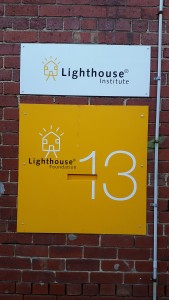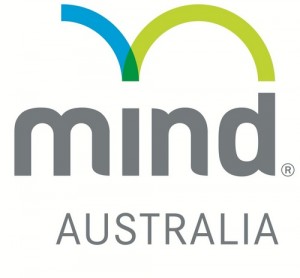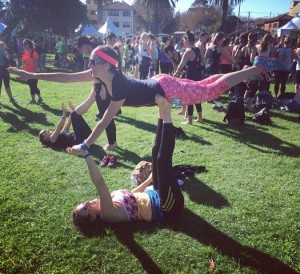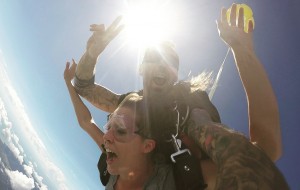The 86 Will Always Take You Home: Reflections From a Month in Australia
Angela Borgerding
(aka A’Mapsy)
My career objective is to work at a public child welfare agency and ultimately work in policy analysis to help ensure that legislation is being created, passed, and enforced, that promotes the mental, emotional, physical, social, and spiritual well-being of all children. I applied to this program because I wanted to understand how child welfare organizations function in Australia and use this to draw comparisons as well as understand differences that will be able to help in understanding how our current system could change.
Throughout our time in Australia we visited several wonderful agencies. The following are some of the agencies that helped to influence my career goals.
Lighthouse
During our visit to Lighthouse we focused a lot of the discussion around the importance of practicing trauma informed care by understanding trauma neurobiology. I think sometimes we can forget that the behavior can be a result of the trauma a child has experienced. For example, due to the trauma experiences a consequence is that the brain in a constant state of arousal which can cause a child to become highly anxious or hyper aroused by every day experiences. This may result in a child acting out or reacting in a strongly negative way to something that would normally not cause much anxiety. In regards to my career goals, I think that it is important to ensure that foster parents have an understanding of the effects trauma has on the brain in order to be able to differentiate between a child who is acting out due to being defiant versus a child who is acting out as a result of their trauma. Being able to gain the insight to begin to differentiate between the two could help reduce the number of children bouncing around between foster homes. If a family is informed that a child has been exposed to traumatic experiences and is equipped with an understanding of what their behavior might look like and they are given tools to help with managing this behavior it might lead to less families complaining about their foster child’s behavior and requesting they be moved.
The idea of projective identification also follows along a similar line. Projective identification refers to a person who is being target with projection beginning to behave, think, and feel in a way that is consistent with that projection. Many times a child who comes from an abusive home thinks that all caregivers will treat them in this way and have difficulty accepting and understanding that there are people who genuinely care about them and want to help them. They also tend to believe that all people will eventually let them down causing them to be distant and reluctant to open up. Again, giving foster parents information about the possibility of them exhibiting a projective identification would allow them to be better prepared in fostering a child who has had particularly bad experiences with parental figures.
Mind
During this agency visit we were able to meet with Dr. Brophy to learn more about the research and evaluation framework for this organization. The one part of the discussion that I particularly enjoyed was when we examined the logic models. We saw how the researchers created logic models with both the staff, youth and parents in order to create a comprehensive logic model. This reminded me of the importance of making sure that everyone is involved in the planning of a child’s placement. Not only is it important for the caseworker to be aware of the objective of a child’s placement but it is also important for the family and child to be actively involved in the planning and to be aware of the long term plan and outcomes.
The other aspect of this organization that I enjoyed learning about was the model the Y-PARC’s use. I found it refreshing that this organization encourages the young people to make their own decisions rather than forcing them do things a particular way. For example, being able to be in charge of their own medications, and if a youth is sick rather than telling them what to do, helping them to navigate the system and to learn how to do things themselves. I think that for my future career this not only applies to children but to parents and families. It is important to not do everything for the family but to help them learn how to navigate the system and create their own path. Giving everything to the family does not help them in the long run as it only provides a temporary solution, however, teaching the family how to navigate systems and how to be self-sufficient creates a longer, more sustainable system and family.
Beyond Blue
This organization has a lot to offer in the way of mental health. I definitely think that using the Kids Matter and Mind Matters Programs helps in reducing the amount of stigma associated with mental illness as well as creating conversation about mental illness. I think that this program can be easily implemented into schools as it is designed to be flexible and work with programs that are already being used in the school system. Again, I think that this program would allow for increased awareness and education about mental health not only for children but for their parents, which could again positively impact family relations, and as having a child with a mental health problem is a risk factor for child abuse and neglect, providing parents with opportunities and tools to understand their child could be used as a protective factor. Additionally, the program designed for postpartum depression is a useful tool to have. As maternal depression can negatively affect child development which could result in strained family relations and even more so having a case opened with children services. Being able to promote awareness about and provide programming for postpartum depression, as well as recognizing that fathers too can experience post-partum depression, could lead to not only better overall health for the parents, but better child development and positive family relations.
Additionally, the social media campaigns, specifically the Brain, reached 73% of young Australians. To think that one social media campaign can reach so many young people really speaks to 1. How many young people are using the internet and 2. How frequently young people are using the social media. I think that using this information and understanding how to relate to the population while also integrating important mental health information is a skill that needs to be cultivated in agencies. In regards to use in my future career, this data goes to support the idea that young people receive information via social media and that this is a platform that should be used to reach them. Additionally, it might be useful to create online social networks to help kids in similar situations connect.
VACCA
The visit to VACCA influenced my perspective on working with diverse populations as it enlightened me to the fact that many times a specific racial or ethnic group will have certain behaviors or thought patterns that they believe are what truly make a person a part of that specific racial or ethnic group. This idea came up in the discussion of stereotypes that people have of Aboriginal people which then led into discussing who holds these stereotypes. The leaders of the group mentioned that many times the Aboriginal people themselves hold these stereotypes and that for example someone might not be considered a “true Aboriginal” if they do not drink alcohol or are not violent, or exhibit other stereotypical characteristics of Aboriginal people.
I then began to think about how this could apply to many stereotypes of minority cultures and how maybe if they were able to change the way they saw themselves or change the way they define what it is to be Black, Asian, Latino, etc. then we might be able to begin to shift the way the majority culture views these groups. Now, I am in no way saying that the majority group should continue to stereotype or deny privilege to the minority groups, but I am simply saying that I think there is something to be said about people groups thinking that in order to belong to that specific group (i.e. to truly be Black, or Asian, or Latino) then they must abide by these certain stereotypes (i.e. be in a gang, be good at math, be a drug dealer) and how this prevents these groups from breaking free of these stereotypes. I also think that this leads to showing the importance of empowering people to break free of stereotypes and to encourage them to define for themselves what it means to be a part of a group.
This influenced my thoughts about racial and ethnic issues in the United States as again it seems as if many groups fall into the trap of believing that in order to truly be a part of that group they must be all of these stereotypical things. This not only makes it challenging for people to understand that they can belong to a group without fitting a certain set of characteristics, but also creates a divide between those that do fit a stereotype and believe that this is what makes them part of the group, and those that have gone beyond the stereotype.
Other Australian Experiences
Wanderlust
Participating in Wanderlust allowed me to experience the freeness in just doing what you want and not being afraid of someone judging you. I tried acro yoga and slackline yoga without being afraid of what someone might say. I was really challenged to continue to challenge myself and to step outside of my comfort zone without fear of being judged. This experience allowed me to be reminded that I need to be open to new experiences and to allow myself to be challenged.
Personal Travel
During my personal travels I ventured to Sydney and Cairns by myself. Having this time to myself allowed me to refocus on my career goals. Travelling around by myself allowed me to further cultivate my strength in being alone. This reminded me to stand firm in what I believe in, even if I stand alone.
Skydiving
While in Cairns I decided to go skydiving. It is something I have always wanted to do but for some reason or another just never have, and I still cannot believe that I actually went skydiving. I did not go with a group or anyone I knew I just went by myself. Surprisingly I was rather calm all the way up until I realized how high the plane was going and when I saw how fast people were being “thrown” out of the plane. Words cannot describe the roller coaster of emotions I went through during this experience. I was at first scared to death and then thought I was going to be sick but then had an epiphany; I was not breathing. I told myself to breath and once I did this I was able to see how truly amazing the experience was. Skydiving taught me to take a leap of faith even if you don’t exactly know what is on the other side and to always remember to breath.
“The 86 Will Always Take You Home”
Now you may be wondering about the title of this blog. Well during our time in Melbourne we had many a travel snafus; we arrived late, got on the wrong tram, and had several uncertainties of the address, amongst other normal tourist mistakes. However, during my personal explorations of the city I came to realize that the 86 tram seemed to always be the closest tram to where I was and would drop me off right across the street from our accommodations. It was at this point that I began to say “the 86 will always take you home”, and ironically enough, when I was leaving Melbourne, I did indeed take the 86 to the bus station to take to the airport to take me home.







